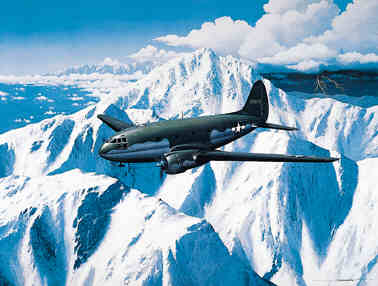My Dad flew China/Burma/India back then. The CBI, as some folks refer to it, were missions flying over the Himalayans or "Hump" to protect and liberate the Chinese from the Japanese invasion.
Looks nice here but the winds are vicious and crazy. Many crews flew into mountains. If they bailed or survived a crash there was no chance of rescue.
I refer to this because I thought some of you might find it interesting and also to say I have second hand knowledge of what was going on then from a command pilot that flew in the pacific theater during that era.
Doolittle's extraordinary efforts using B-29s launched from carriers is pretty well known. Lemay's tactics are less known but worth mentioning.
"LeMay took a calculated risk and radically revised bombing strategy, changing from high-altitude, daylight precision bombing with high-explosive bombs to low-altitude night missions using incendiary bombs.
The first target was Tokyo and on the night of March 9-10, 334 B-29s struck at altitudes of 5000-9000 feet, starting fires which, aided by winds, burned out almost 16 square miles of the city. Destruction in other crowded industrial cities in follow-up raids was tremendous, wiping out thousands of war production facilities interspersed in the residential areas. B-29 losses to enemy action during these night raids were practically nil, despite the fact that B-29 bomb capacity had been increased by removing most aircraft defensive armament." Fire Bomb Raids
16 square miles of Tokyo burnt to the ground.
Many people believe the Japanese balloon bombs were a desperate attempt at retaliation for this. As has been pointed out, the program didn't start until 1944 but that doesn't mean test launching didn't occur in 1942.
I don't know what really happened over Los Angeles that night but I suspect it was a balloon bomb. If you look at the photo in the link Alan posted the artillary bursts are above the object...no hits.
Here is a balloon bomb in broad daylight:
Balloon Bombs
Here is a gun camera shot of one going down. Hydrogen, not Helium.
The west coast shore batteries were very inaccurate by today's standards and operated by a largely non-combat tested contingency. I think we may have just missed. I would rather think a benevolent visitor cruised by to see who turned out the lights but I just can't go with that story.




